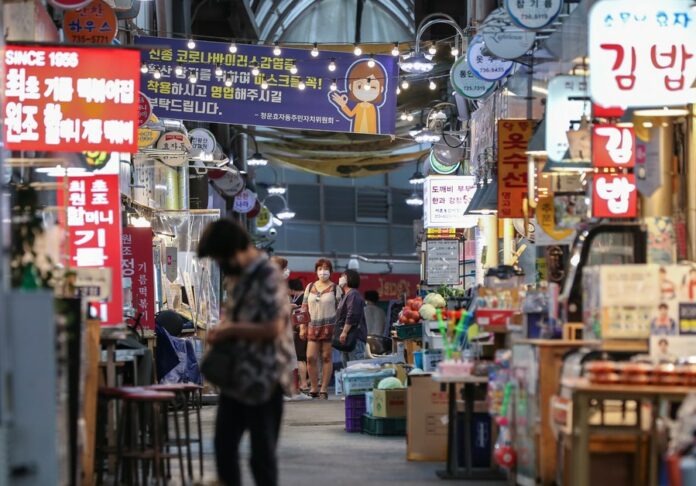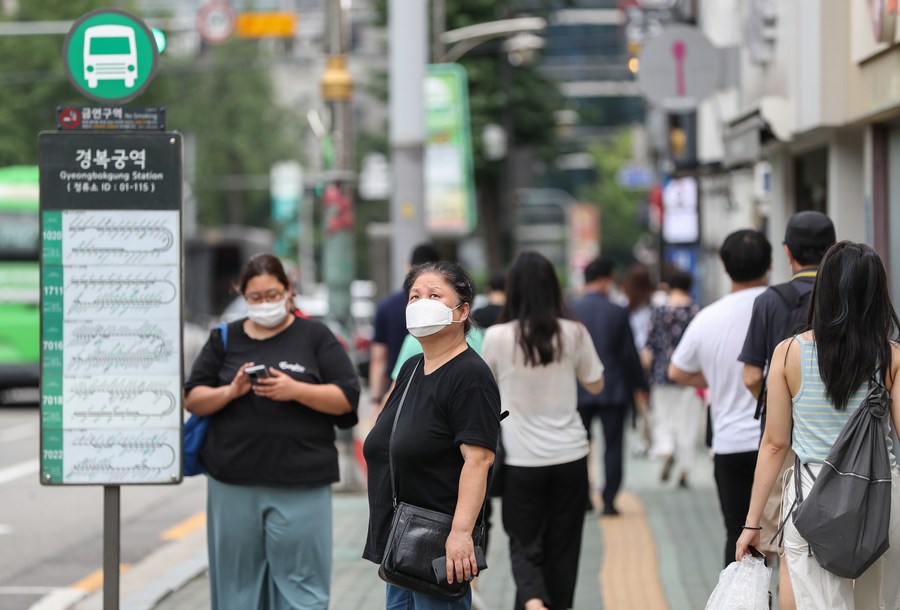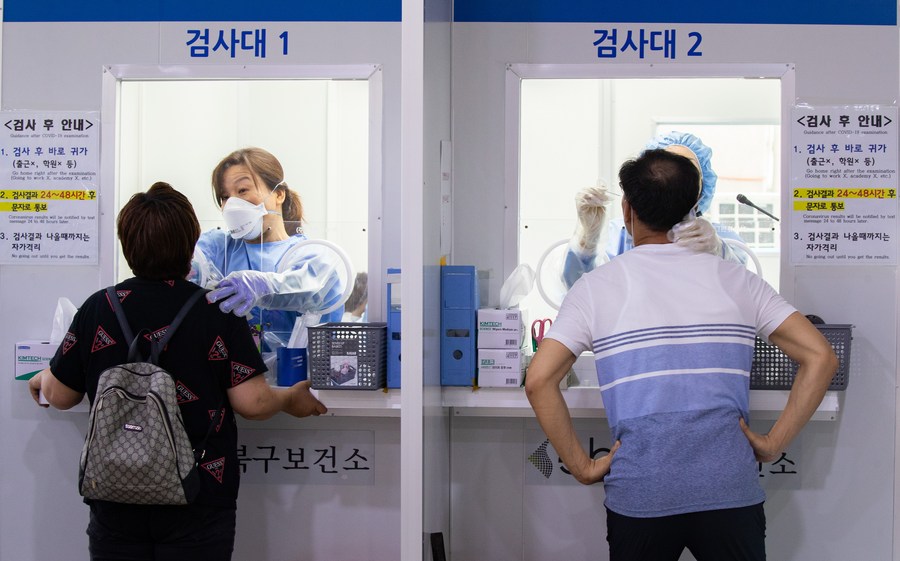
SEOUL (Xinhua) — South Korea, once praised as a model for response to the COVID-19 pandemic, currently faced a resurgence as mistrust and misinformation about the government’s quarantine measures spread among the conservative members of a church in Seoul.
The Korea Centers for Disease and Control and Prevention (KCDC) said Wednesday that it had confirmed 320 more confirmed cases of the COVID-19 for the past 24 hours. The total number of cases increased to 18,265.
The daily caseload grew in triple digits since Aug. 14. It was far lower than elsewhere in the world, but anxiety over resurgence was greater than ever because of the misinformed worshippers hampering the government’s quarantine efforts.
Escaping From Hospital
A South Korean man infected with the virus sneaked out of the hospital in Gyeonggi province, where he was being treated, around midnight on Aug. 18 and moved by bus to Seoul with his mobile phone being turned off.
He was the first known case here to escape from hospital after testing positive for the COVID-19. He had his phone off in a bid to prevent police from tracking him down.
The patient was caught past midnight the following day at a bustling coffee shop in Seoul, raising a high possibility for his virus infection to about 40 people there.

He was confirmed with the virus after attending worship services at Sarang Jeil Church in Seoul, seen as an epicenter of the recent resurgence. He transmitted the virus to his family.
A South Korean woman in 40s, who tested positive for the COVID-19, bit the arm of her husband and escaped around noon on Aug. 17, refusing to be admitted to a hospital for treatment.
She was caught about four hours later at a nearby park. Before being infected, the resident in North Gyeongsang province had stayed in the Seoul church since March.
Their inexplicable behavior came from groundless mistrust and misinformation about the government. They believed that the government deliberately let the uninfected church members test positive for the virus to destroy the church led by far-right pastor, Jun Kwang-hoon.
“I think that (the government) branded those (church members) who contracted a simple flu or pneumonia as being infected with the COVID-19. We cannot go to a hospital as we can be branded as patient. (The government) has an intention to do damage to the pastor,” local broadcaster MBC quoted one of the church members as saying.
Virus Terror From Outside
Misinformation and mistrust among the worshippers stemmed from Jun, who also tested positive for the virus and was being hospitalized for treatment. He claimed that he had five tip-offs on “virus terror” from outside that sneaked into the Sarang Jeil Church.
Jun participated in a massively rally, held on Aug. 15 beside the Gwanghwamun square in central Seoul. He claimed that there had been no case of outdoor infections found yet if people wear mask, encouraging the church members and conservatives to join the rally.
Tens of thousands of protesters gathered in the square, standing or sitting side by side. Most of them wore masks, but some pulled off masks, with others even eating food, local TV footage showed.

As of Wednesday, the number of confirmed cases linked to the Aug. 15 rally was 193, with most infections discovered in the Seoul metropolitan area and more than 30 cases found in other provinces. The number included police officers who were in the square to prevent any mishap during the rally.
Before the rally, the health authorities warned against the danger of resurgence, but the organizers downplayed the warning. The demonstration, driven by conservative politicians, civic groups and church members across the country, was promoted in major conservative newspapers to draw public attention.
The number of infections traceable to the Sarang Jeil Church was 915 as of Wednesday. The first confirmed case of the COVID-19 from the church was reported on Aug. 12, and it has since grown in double digits.
South Korea had been seen as a model for the response to the COVID-19 pandemic thanks to its effective system of fast and massive testing, broad contact tracing, transparency, and people’s trust in the government’s quarantine efforts. Helped by the system, the daily caseload dropped to two on May 6 after peaking at 909 on Feb. 29.
However, the system seemed not to work. KCDC Director Jeong Eun-kyeong told a press briefing on Sunday that the current resurgence “is not at the peak,” warning against a possible pandemic seen in February and March.















































